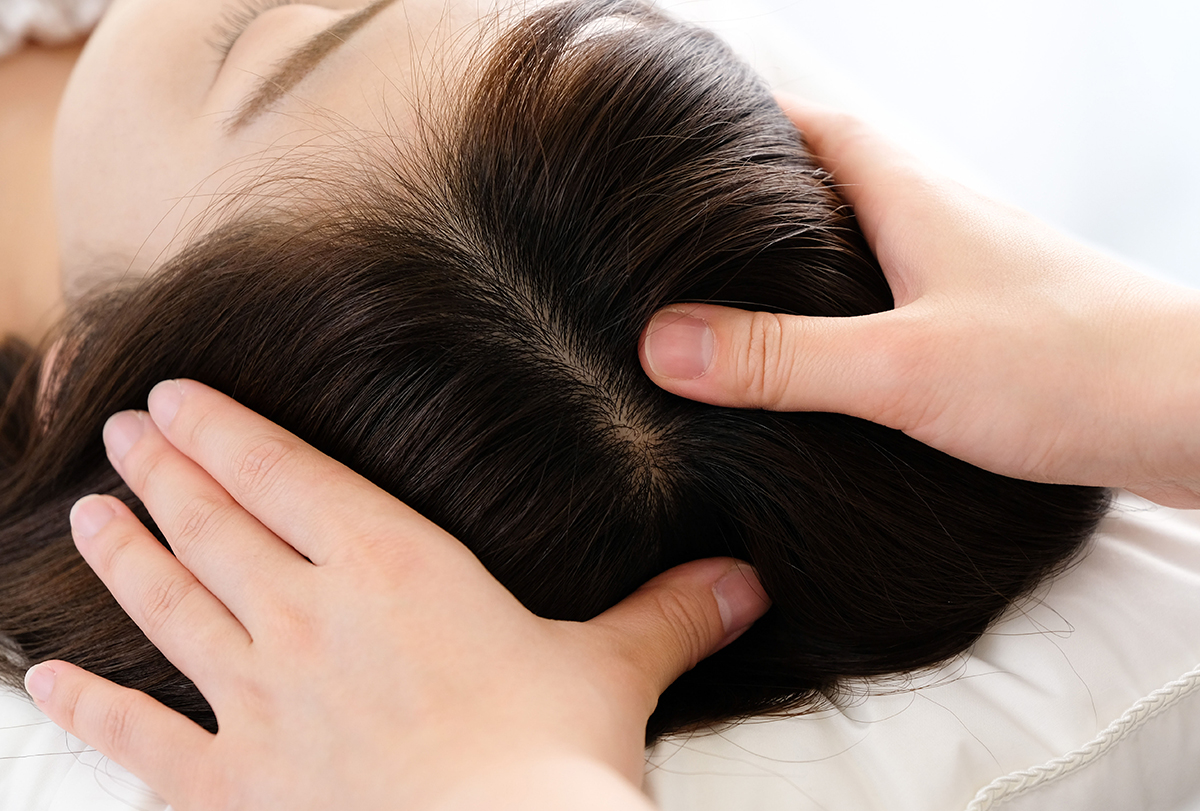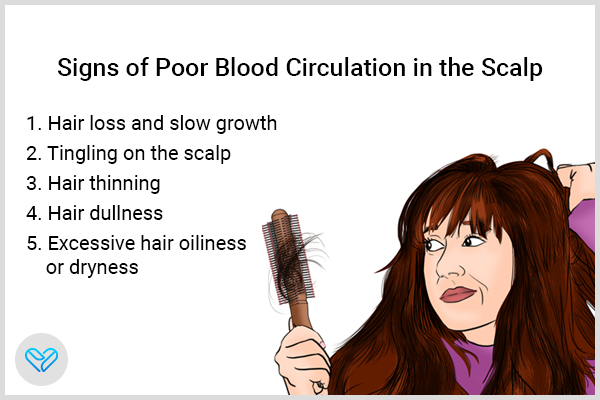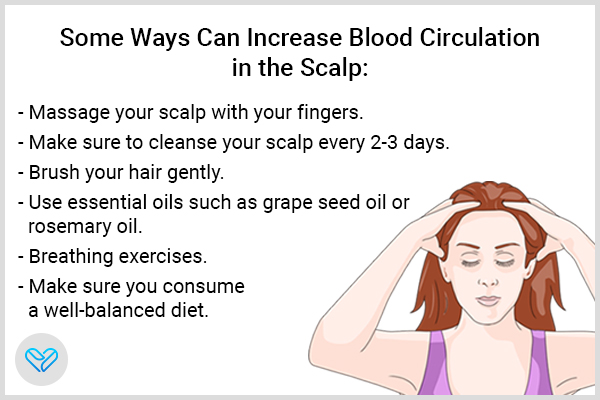In this article:
The importance of proper blood circulation in promoting the body’s cellular and tissue health also applies to the scalp. Ensuring that the scalp enjoys proper blood flow is fundamental for ensuring healthy and vibrant hair.

But how do you determine that your scalp is getting the blood supply it needs? Recognizing the signs of insufficient circulation is, therefore, important for keeping up your hair’s vitality.
This article will look into the indications of poor blood circulation in the scalp.
Signs of Poor Blood Circulation in the Scalp
Keep your eye out for these signs and indications of improper blood circulation in the scalp.
1. Hair loss and slow growth
While it is normal to lose about 100 hair strands per day, consistently experiencing issues such as hair thinning, excessive hair loss, or slow hair growth is likely due to poor blood circulation. (1)
Inadequate blood flow hampers the nourishment of your hair follicles, hindering their growth, and leading to the formation of hair loss patches. (2)(3)
Therefore, regular hair loss can be associated with circulation problems as nutrient-deprived hair follicles are more likely to shed.
2. Tingling on the scalp
Experiencing tingling, numbness, or a pins-and-needles sensation in your scalp can be a direct sign of circulation problems.
When the blood isn’t reaching your scalp as it should, hair follicle problems can occur, causing a tingling sensation, according to experts and anecdotal evidence.

3. Hair thinning
Poor blood circulation in the scalp can cause loss of hair density, because of which you will experience thinning of hair.
When your hair lacks good density, it appears weaker and less voluminous. If that is the case, you may need increased blood supply in the scalp. (4)
4. Hair dullness
If your hair looks flat, lacks shine, and appears dull, you may have poor blood circulation in the scalp.
Since adequate blood supply is a must for nourishing hair follicles, (3) without proper blood circulation in the scalp, your hair will not be able to look full and lively as it will not get the required nutrients.
5. Excessive hair oiliness or dryness
Poor circulation can lead to imbalanced oil production, resulting in either greasy or excessively dry hair.
According to dermatologists, an improper secretion of oil/sebum on the scalp leads to many other issues and can also contribute to dandruff problems.
How to Improve Blood Circulation in the Scalp?

Here are some ways you increase blood circulation in the scalp:
- Massage your scalp with your fingers, not your nails, with light pressure to stimulate your blood vessels. (5)
- Make sure to cleanse your scalp every 2-3 days with the right shampoo to avoid product buildup.
- Brushing your hair gently to detangle it can also be helpful for improving blood circulation in the scalp.
- Use essential oils such as grape seed oil or rosemary oil to promote blood circulation in the scalp. (6)
- Breathing exercises can be helpful for giving your scalp a quick boost of blood supply.
- Make sure you consume a well-balanced diet that supplies nutrients such as niacin, zinc, iron, and vitamin A. (7)
- Use onion juice for rinsing your scalp and hair.
- Try to de-stress now and then with relaxing activities such as meditation.
Most-Asked Questions
Can exercising improve blood flow to the scalp?
Yes, exercising regularly can help improve blood circulation in the scalp.
What oils are good for scalp massage?
Coconut oil and castor oil can be helpful for a scalp massage.
Final Word
Healthy hair relies on good scalp blood circulation. Recognizing poor circulation signs is key for hair health. Thus, watch for hair loss and slow growth, tingling, hair thinning, dullness, and oil imbalances.
To boost scalp circulation, try gentle massages, regular cleansing, light brushing, using essential oils, deep breathing, following a nutrient-rich diet, relieving stress, and exercising.
- Was this article helpful?
- YES, THANKS!NOT REALLY


